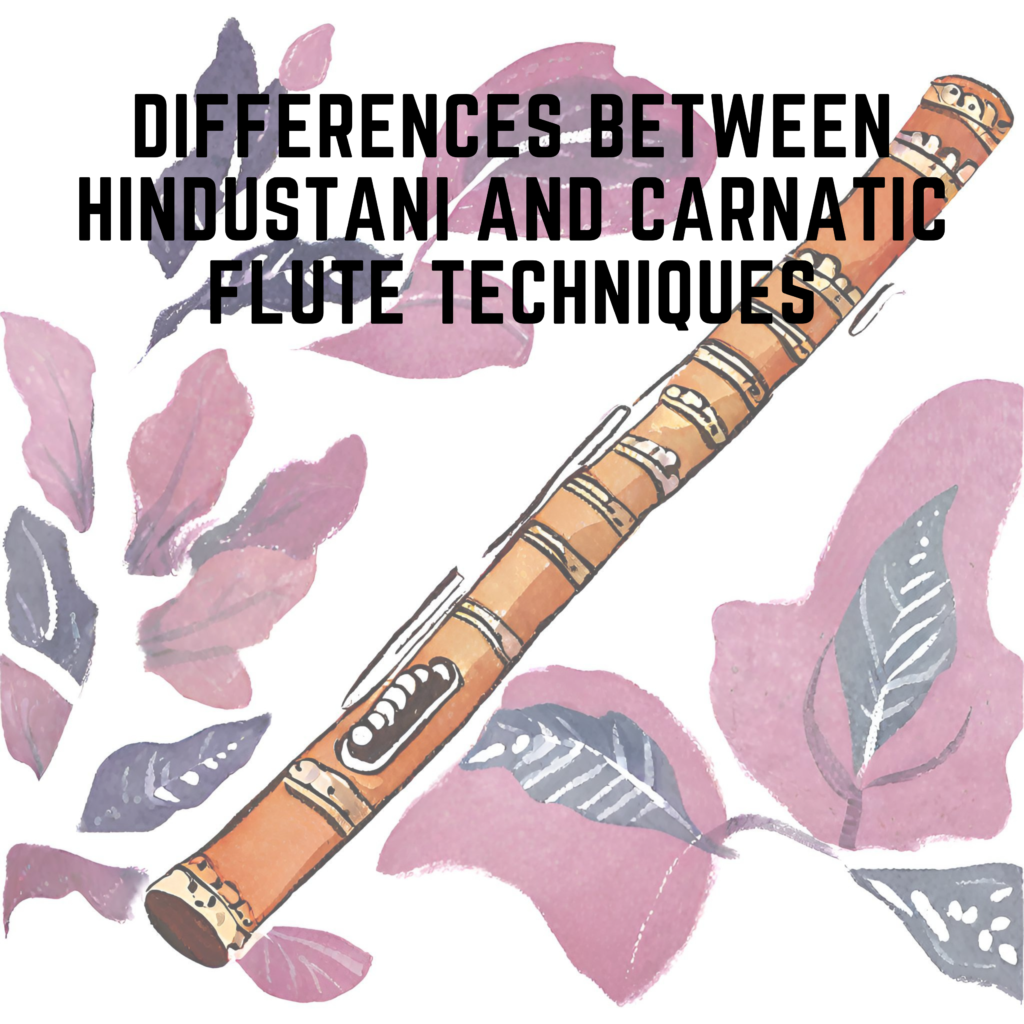Table of Outlined Topics:
| Heading | Subheading or Explanation |
|---|---|
| Introduction | Brief on the significance of Hindustani and Carnatic flutes. |
| Historical Evolution | |
| – Hindustani Flute Evolution | Tracing the history of the Hindustani flute. |
| – Carnatic Flute Evolution | Tracing the history of the Carnatic flute. |
| Physical Characteristics | |
| – Structure and Material of Hindustani Flute | Detailing the physical attributes of the Hindustani flute. |
| – Structure and Material of Carnatic Flute | Detailing the physical attributes of the Carnatic flute. |
| Playing Techniques | |
| – Basics of Hindustani Flute Playing | Introducing the essential techniques. |
| – Basics of Carnatic Flute Playing | Introducing the essential techniques. |
| Differences Between Hindustani and Carnatic Flute Techniques | Comparing both techniques side by side. |
| Melodic Framework | |
| – Raagas in Hindustani Music | Exploring the melodic structures in Hindustani music. |
| – Ragas in Carnatic Music | Exploring the melodic structures in Carnatic music. |
| Rhythmic Complexities | |
| – Taals in Hindustani Music | Introducing rhythmic patterns of Hindustani music. |
| – Talas in Carnatic Music | Introducing rhythmic patterns of Carnatic music. |
| Famous Flautists | |
| – Iconic Hindustani Flautists | Introducing key figures of the Hindustani flute world. |
| – Iconic Carnatic Flautists | Introducing key figures of the Carnatic flute world. |
| FAQs | Answering common queries about Hindustani and Carnatic flute techniques. |
| Conclusion | Summarizing insights and emphasizing the beauty of both flute traditions. |
The Bewitching Blown Beauty: Differences Between Hindustani and Carnatic Flute Techniques
An enthralling voyage into the world of Indian classical flutes, unearthing the distinctions that make both Hindustani and Carnatic techniques unique.
Introduction
Flutes, one of the oldest musical instruments known to humanity, have been a cornerstone of Indian music for millennia. Particularly, the Hindustani and Carnatic flute techniques have been mesmerizing enthusiasts with their distinct flavors. Let’s dive deep into this melodious world and uncover the nuances that set them apart.
Historical Evolution
Hindustani Flute Evolution
The journey of the Hindustani flute, predominantly from North India, can be traced back thousands of years. Over the ages, it has witnessed many modifications, adapting to changing musical trends while preserving its timeless essence.
Carnatic Flute Evolution
Originating from South India, the Carnatic flute’s lineage is equally ancient. Through generations, its design and playing techniques have evolved, yet the soulful melodies remain a testament to its rich history.
Physical Characteristics
Structure and Material of Hindustani Flute
Hindustani flutes are usually made of bamboo, featuring a unique cylindrical shape. They possess six to seven finger holes, which help produce a diverse range of notes.
Structure and Material of Carnatic Flute
Contrastingly, the Carnatic flute has a thicker bamboo construction and sports eight finger holes. This design enhances its range and flexibility, allowing for more intricate compositions.
Playing Techniques
Basics of Hindustani Flute Playing
Hindustani flutists emphasize continuity in their musical phrases. Techniques such as “meend” (sliding between notes) and “gamak” (oscillating a note) are widely used, offering a soul-stirring experience.
Basics of Carnatic Flute Playing
Carnatic flute playing is known for its briskness and mathematical precision. Techniques like “janta varisai” (double note patterns) and “brighas” (rapid note sequences) are prominent, making it rhythmically engaging.
Differences Between Hindustani and Carnatic Flute Techniques
While both styles offer a unique aural treat, key differences lie in their approach to melody and rhythm. Hindustani techniques prioritize emotional expressions, whereas Carnatic techniques emphasize structured progressions.
Melodic Framework
Raagas in Hindustani Music
Hindustani music boasts a plethora of “raagas” (melodic modes). Each raaga evokes specific emotions, and flutists use them as foundations to craft spontaneous performances.
Ragas in Carnatic Music
Similarly, Carnatic music has “ragas”, though with distinct scales and note patterns. Flutists typically adhere to composed pieces, showcasing their skill and creativity within those boundaries.
Rhythmic Complexities
Taals in Hindustani Music
“Taals” form the rhythmic backbone of Hindustani compositions. Varying from simple to complex cycles, they give flutists the latitude to experiment and express.
Talas in Carnatic Music
In contrast, “talas” in Carnatic music are more structured. They provide a disciplined framework, leading to rhythmically intricate performances.
Famous Flautists
Iconic Hindustani Flautists
Legends like Pt. Hariprasad Chaurasia have left an indelible mark on the Hindustani flute tradition, enchanting global audiences with their virtuosity.
Iconic Carnatic Flautists
Dr. N. Ramani, among others, has elevated Carnatic flute playing to new heights. Their performances are a masterclass in precision and melodic mastery.
FAQs
How old are the traditions of Hindustani and Carnatic flutes? Both traditions are thousands of years old, rooted in India’s rich cultural tapestry.
Are the flutes used in both styles identical? No, they differ in structure, material, and the number of finger holes.
Can a flutist master both techniques? While challenging, dedicated musicians have successfully mastered both styles.
Which technique is more complex? Both techniques have their complexities; it’s subjective and depends on individual perspectives.
Are there hybrid styles combining both techniques? Yes, many contemporary musicians fuse elements from both traditions, creating innovative sounds.
Conclusion
The worlds of Hindustani and Carnatic flutes, though stemming from the same cultural roots, have flourished into distinct entities. By understanding their differences, we can truly appreciate the depth and beauty of Indian classical music. Embracing both traditions enriches our musical palette, offering a symphony of emotions that resonate across time and space.
Namaste!
Instagram: @thepinklotusacademia
Facebook: @thepinklotusacademia
Faculty:Kaavita Das
Enquire Now: Click Here
Yoga Apparells: https://amzn.to/47rLhVl
Learn more: The Pink Lotus Academ














